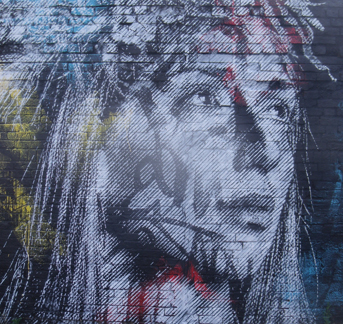Conor Hickey, Head of Solution Architecture, Agreement Automation, EMEA, at the US-based authentication product company OneSpan, looks at the future of facial biometrics.
You might not realise it, but biometric identity verification technologies have become commonplace in our daily lives. More and more applications are being developed as the technology continues to evolve and, while privacy concerns are still prevalent, the commercial applications and benefits of biometric technologies mean they are here to stay.
Of the types of biometric identity verification, facial recognition and facial comparison are two of the most widely adopted and are used to verify that a source image of a human face matches another image – either stored or supplied.
Facial recognition assumes that there is a ‘store’ of multiple images that the source image can be compared against – the source image is then ‘recognised’ in the store of images. In contrast, facial comparison assumes that two images of the same person are being compared. So, how are they being used in our daily lives?
Uses
One of the most common uses of facial recognition is in law enforcement, where a database of images of known criminals can be searched and the relevant authorities notified on a match. In China for example, police have trialed smart glasses that scan peoples’ faces and compare them against a database of criminals and outstanding warrants.
It is also commonly used for enterprise-wide security systems. Using facial recognition, a database of employee facial images can be searched to ensure that only the right employees are granted access to a restricted area (either physical or virtual).
On the other hand, facial comparison is typically used where a trusted source image of the user – usually extracted from authenticated identity documents such as passports – is available to compare a real-time image against. For this reason, document verification and facial comparison are often used together, with automated passport control (‘e-gates’) being one of the most common uses.
In the banking world, facial comparison is being used by financial institutions to speed up the onboarding process, such as during digital account opening. It can be used to verify the identity of an applicant or unknown user when that user is not physically present, or to prove that the right applicant is in the room. Here’s how it works:
1.Document verification is used to verify the authenticity of an applicant’s passport, ID card, or driver’s license.
2.Once the authenticity of that ID document is confirmed, the applicant is asked to take a selfie using their handheld device.
3.Advanced algorithms extract biometric data from the image and the applicant’s facial features (such as the position and size of a person’s eyes relative to each other) into a standardised dataset.
4.Facial comparison technology then compares the selfie image with the image from the verified ID document to prove that the verified person is genuinely present during the account opening process.
This also highlights the role of facial biometrics in fighting fraud. Application fraud and account takeover fraud are the two biggest fraud challenges facing the financial sector, but facial biometrics can be used to help fight fraud by validating a user’s identity in real-time – whether that user is online or on a mobile. The use of facial recognition or facial comparison technology simply depends on whether a user is known or unknown.
If a user is unknown, then FIs can use facial comparison to prove that a user is not fraudulently attempting to open an account. If a user is known, facial recognition can be used to authenticate that a user is genuine and is not fraudulently trying to access someone else’s account.
Future trends
So, facial comparison and facial recognition technologies are already widely used. But, with the likes of Google, Facebook and Amazon all investing heavily in the area, what are the next big trends for facial biometrics?
Liveness detection
Critical to any facial biometric technique is the ability to detect spoofing and fraudulent behaviour, such as presenting a previously obtained static picture of an individual for comparison against the trusted source image. This can be counteracted using liveness detection, with the most common form being to instruct the user to carry out a series of head movements to prove liveness. More advanced techniques such as 3D recognition and thermal imaging require specialist hardware and are not suitable to everyday commercial applications.
Emotion recognition
Initially used unsuccessfully as an anti-terrorism device in the mid 2000s, emotion recognition is now being used in the context of more commercial applications, such as for fatigue detection in car safety systems. The ability to determine the emotional state of an individual from a digital image can be used to improve customer experience or potentially drive customer behaviour. At a basic level, it works by digitally transforming the subject’s face into a facial feature dataset and comparing this against a pre-defined emotional classification model. However, the technology is still being refined. Reliable classification models are difficult to create, while differences in the way the same emotion is expressed between nationalities and races needs to be accounted for.
Ultimately, facial comparison and facial recognition technologies are being used by financial institutions, enterprises and governments for a wide array of use cases – from fighting fraud to payments, cross-border customs, and access. No technology is completely fool-proof however, and the endless possibilities facial biometrics could bring have to be weighed against its capacity to be abused – which could lead to the introduction of universal standards to regulate its use in the future.
For now, while the benefits of facial biometrics for financial institutions during digital account opening and for fraud prevention are clear, the pace of innovation means that the true possibilities of facial biometrics remain open.
Picture by Mark Rowe; street art, Cheltenham.









